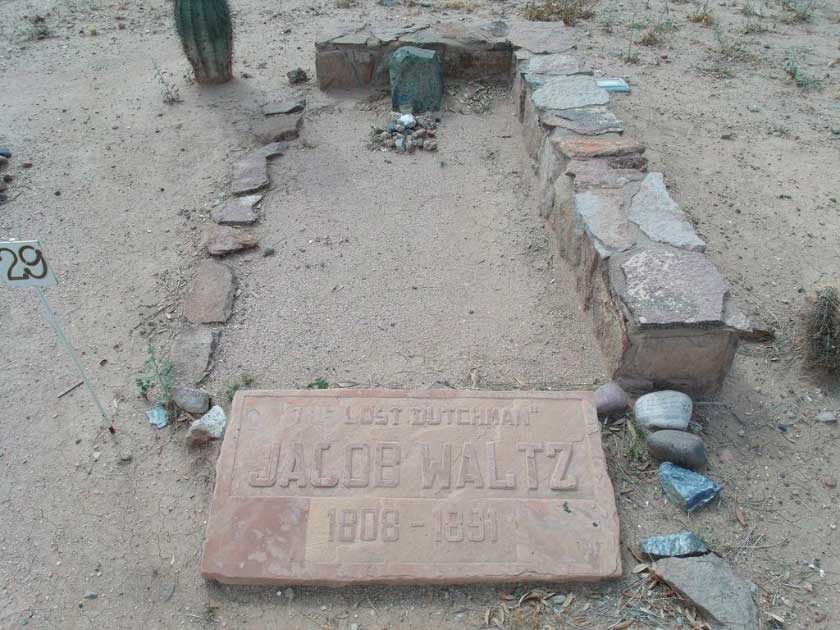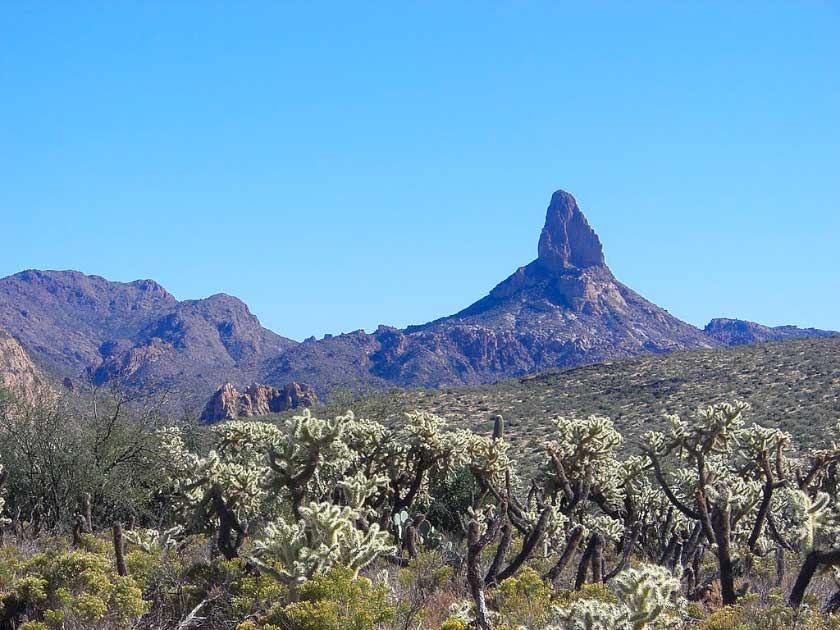The Wild West was aptly named. The raw frontier of immigrant expansion across the United States was a lawless place where a brave soul could win a fortune, or lose their life. This was a brutal land where life could be cheap: here be dragons, and here be treasure too.
One such legendary treasure is that of the Lost Dutchman’s Mine, a gold mine supposedly somewhere in the Superstition Mountains to the east of Phoenix, Arizona. Some say the mine was found by a German named Jakob Waltz (Dutch being a common abbreviation for “Deutsche” in the United States), some say the gold was found by soldiers, and some say it is Apache gold.
Maybe there is no truth to any of the stories, or maybe parts of all three are true. After Waltz died in 1891 there have been many attempts to find the mine and the king’s ransom of gold said to be found within.
But none have succeeded. Is there a lost gold mine hidden in the Arizona mountains, waiting to be found?
What is the Lost Dutchman’s Mine?
Among all the stories of the mine, the most common threads are these: the mine was originally a secret of the local Native American Apache, who had taken it from a prospector named Miguel Peralta who originally discovered the gold in the 1850s.
Later, a doctor (possibly from the US army) treats an injured Apache who subsequently recovers from his wounds. As a reward the doctor is blindfolded and taken to see the mine, which he reports as being filled with gold. We know nothing about the doctor aside from his name: Dr. Thorne.
Later still, two Germans in the area come to the aid of another member of the Peralta family, and are told the location of the mine as a reward. The two men are Jakob Waltz and Jacob Weiser, and are often thought to be the same man with two different versions of his name. Weiser disappears from the narrative but Jakob Waltz supposedly made a deathbed confession and even drew a map to find the mine.
As per the story, Waltz had been obsessed with finding gold but found nothing, even with the help of local Apache with whom he worked. However, once furnished with the location he found an active mine with three Mexican laborers working a vein of the gold a foot wide.
Waltz determined that the riches of the mine should be his. Shortening his shotgun’s muzzle he attacked the Mexican camp, killing the three men. Then, to prevent its discovery the German disguised the entrance of the mine and stayed away from it for more than two years.

Several years later, Jakob returned to the area with his friend Julia Thomas, a woman of African and European ancestry who grew up in Germany. When Jacob became older and realized he would not be able to work the mine himself, he decided to tell Julia about the mine.
Julia then introduced Jacob to a man named Dick Holmes. Dick Holmes was a man who knew the Superstition Mountains well and was also a skilled miner.
Furnished with directions, Dick Holmes set forth to find the mine, but ran into trouble, describing the terrain as the roughest on earth. Later on, Dick Holmes’s son became the partner of Clay Worst and also tried to find the Dutchman’s gold mine, Driven by being shown a matchbox made of pure gold which had been given to Dick Holmes by Waltz.
Dick Holmes also described a strongbox left by Waltz containing 50 pounds (23 kg) of pure gold. How could Jakob have come across these riches unless the story of the mine was true?
One final tale revolves around the finding of the mine. Some say that US soldiers in the area also discovered the mine, but that they were reposted or killed before they could return to excavate the gold.
A Problem With the Stories
While the above might seem compelling evidence for the existence of such a mine in the Superstition Mountains, there are problems with the story. Almost everything about the three tales is hearsay, and there is no actual evidence of the mine’s existence.
There are no records of a Dr. Thorne and while Jakob Waltz existed, there are no records of his partner either. The soldiers do not even have names and that story is impossible to verify.
The map that Waltz drew, the strongbox of gold and the solid gold matchbox have not survived, and some doubt whether they ever existed. Jakob’s death bed testimony which starts the story further removes treasure seekers from the truth, as with Jakob dead there is nobody left to assist who had actually ever seen the mine.
Other aspects of the stories suggest that they are not true. A man named Peralta often appears in local legends, most likely named for Pedro de Peralta, Spanish governor of New Mexico in the 17th century. But there is a more fundamental problem than all of these put together, in that the Superstition Mountains are just not the right sort for gold.
The mountains are formed from igneous rocks such as granite, formed from cooling lava and magma and extremely hard wearing. They are also entirely unsuitable for gold mines, and it seems that no gold could naturally exist in the mountains. The Apache “mine” would rather have to be a cache.
Will It Ever Be Found?
By now it seems unlikely that the mine will ever be found. All the evidence comes from spurious, unrelated stories of gold in the hills outside of Phoenix, told at a time when many believed they could strike it rich on the wild frontier.
There is no solid evidence of the mine, and some even believe it is impossible for the mountains to have any gold in them at all. But this does not deter treasure hunters, and those that believe can point to some strange aspects of the story which suggest it may be true.
For one, Jakob Waltz does appear to be a real person. Documentation supporting his existence and emigration to the United States dates back at least as far as 1848. We know he moved to Arizona in the 1860s, and that he owned a ranch on which he died in 1891.

Jakob was also known to be wealthy, and to know the surrounding area including prominent natural landmarks. His descriptions of routes into the mountains which furnish the location of the mine seem to match up with local terrain, and offer some plausibility to the story.
Furthermore, the story was not a later invention and treasure hunters started searching for the mine as early as 1892, the year following Jakob’s death. If there was no deathbed confession, what started the stories and why did people suddenly start searching the Superstition Mountains for gold?
Several explorers have made several trips to find this mine, but no one to date has seen the gold. Several people have died during their expeditions, as the hills are uneven and offer perhaps the most challenging surface on the earth for long-term exploration.
Are there untold riches hidden in Arizona? Or is the whole story a lie?
Top Image: Is the Lost Dutchman’s Mine real? Source: Onyx124 / Adobe Stock.
By Bipin Dimri